“Participation. That’s what’s gonna save the human race.” (Pete Seeger)
Documenting WAO’s collaboration with Participate
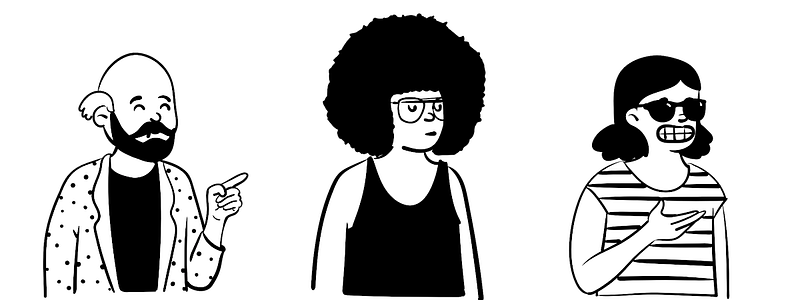
We Are Open is once again collaborating with Participate, which is always a good time for our members. The folks at Participate are awesome, and have previously sponsored our work on Badge Wiki among other community endeavours.
This time around, we began our conversation from a starting point of our several year old Badge Bootcamp email course. WAO was looking to update it, while Participate was looking to add some online sessions. However, as we chatted, our conversation quickly led us to something even more interesting: a social learning approach using Communities of Practice (“CoP”) + Open Badges (“badges”) to:
- Upskill Participate team members
- Educate people who are CoP-curious about value cycles
- Provide real-world experience of badges to those new to them
It’s always best to start at the beginning, so when we realised our scope and desire had changed, we sketched out personas and a project timeline.
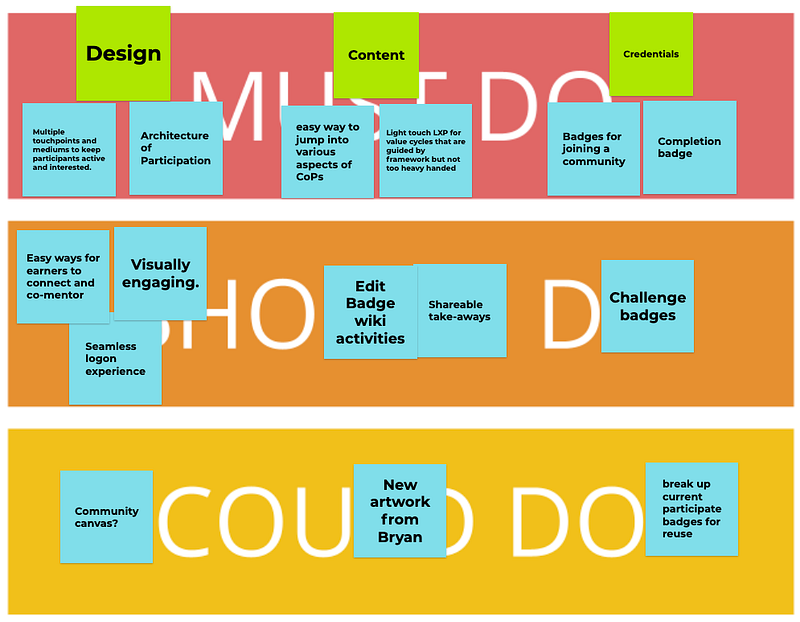
In one of our workshops, Mark Otter (Participate’s CEO) used the phrase “Crawl, Walk, Run”, which is a perfect metaphor for a scaffolded release of a product.
This phrasing gave us ideas around how to structure the project — namely:
- Crawl — we’d start by upskilling staff users and gathering their feedback. Integrating their ideas into the structure and content would make it better for our “Walk” group of users.
- Walk — people (external users) who are curious about CoP and want to learn more.
- Run — after we’ve piloted this work with the CoP-curious folks, we engage with Badge Champions . These are people who are motivated and influential in getting an organisation to start thinking about upskilling in a non-traditional way.
Learning Journey Design
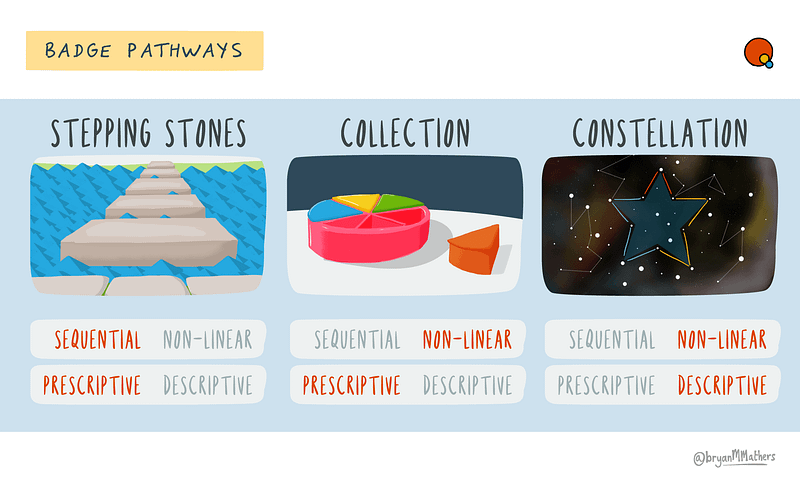
Too often learning design starts from the premise that there is a ‘body of knowledge’ for those taking the course to work through. The structure is therefore a bit like stepping stones across a river — any deviation and you ‘fall in’!
As experienced learning designers, and working with Participate who are experts in this, we decided on a different approach.
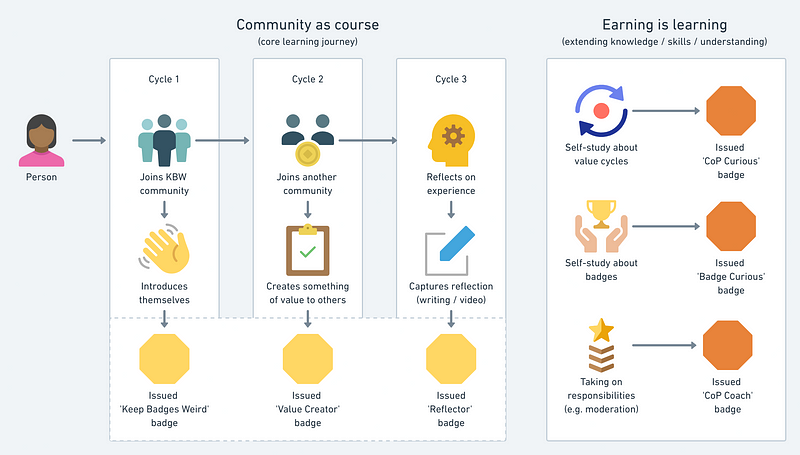
The above structure ensures that there is a core learning experience which situates the participant and helps them to not only learn but *experience* what they are learning. For example, as you can see in the ‘Community as Course’ section, participants not only learn about CoP but get involved in (more than) one.
At any point, and not just when they’ve finished the above, participants can dive into the ‘Earning is Learning’ courses which help widen and deepen their knowledge and experience around CoP and badges. It might be that some participants never touch this material, which is fine, but the chances are that most will at least be curious to know a little more about either or both at some point.
Badge System Design
The great thing about badges is that they can be issued to anyone for anything. That means not only can Participate issue badges, but volunteer community moderators can too — and even participants can peer award!
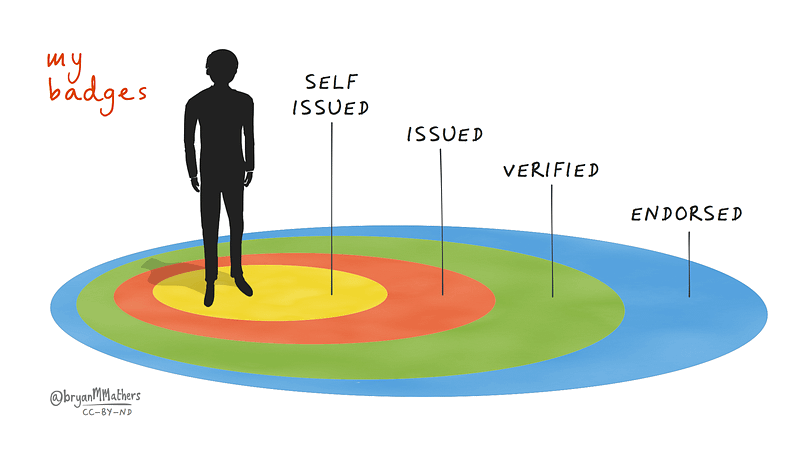
In this initial structure, we’ve designed badges that recognise the ‘value cycles’ that are central to Communities of Practice. So the badges for ‘Community as Course’ encourage participation, creating value for others, and reflecting on that experience.
Likewise, with the ‘Earning is Learning’ courses, badges involve not only knowledge acquisition and reflection, but also the *creation* of badges. This ensures that participants have both the theory *and* the practice to uses badges in future.
Good badge design has three pillars:
- A striking and relevant visual image
- Clear criteria on how the badge is earned/awarded
- A description explaining the value of the experiences recognised by the badge
In addition, and where relevant, it’s really useful to have *evidence* of what the participant did to earn the badge. In our example above, the ‘Value Creator’ badge involves participants joining other communities, situating themselves, and adding value. Capturing that value in the badge evidence, either as a link or a screenshot, helps explain what the participant did, and the (potential) impact it had.
Next steps
We’re about to embark on a series of internal community calls for Participate staff to build momentum around the project. This is an approach we’ve used with Mozilla, Greenpeace, and other organisations to help obtain buy-in. It’s a key part of a healthy architecture of participation.
Separately, but related, we’re considering adding an introductory course to our existing free, email based ones at learnwith.weareopen.coop.
Written by Doug Belshaw & Laura Hilliger
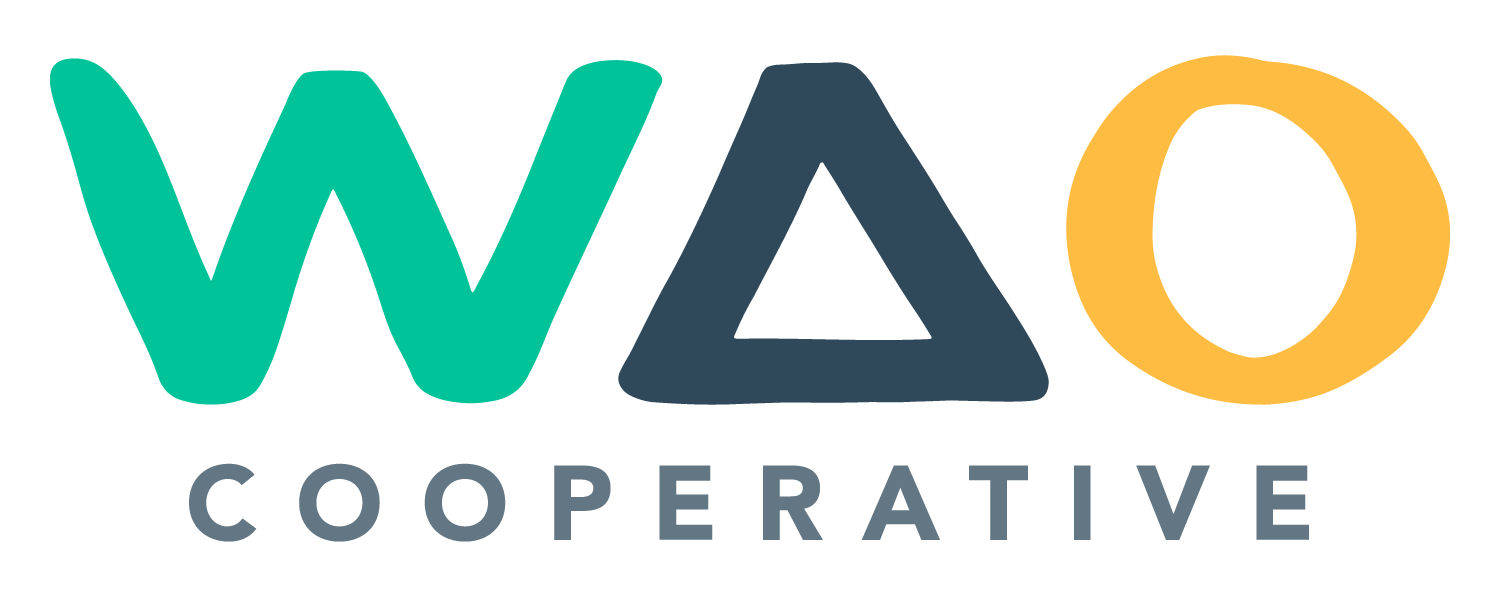
Discussion